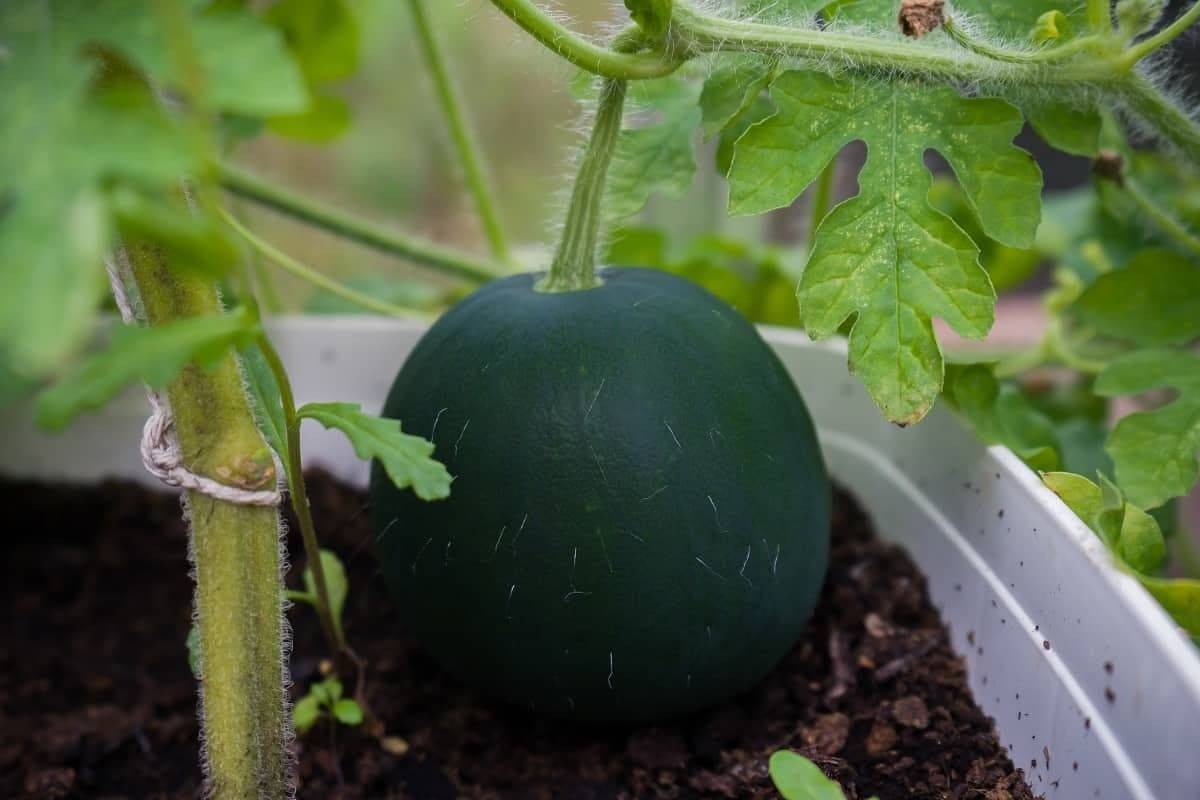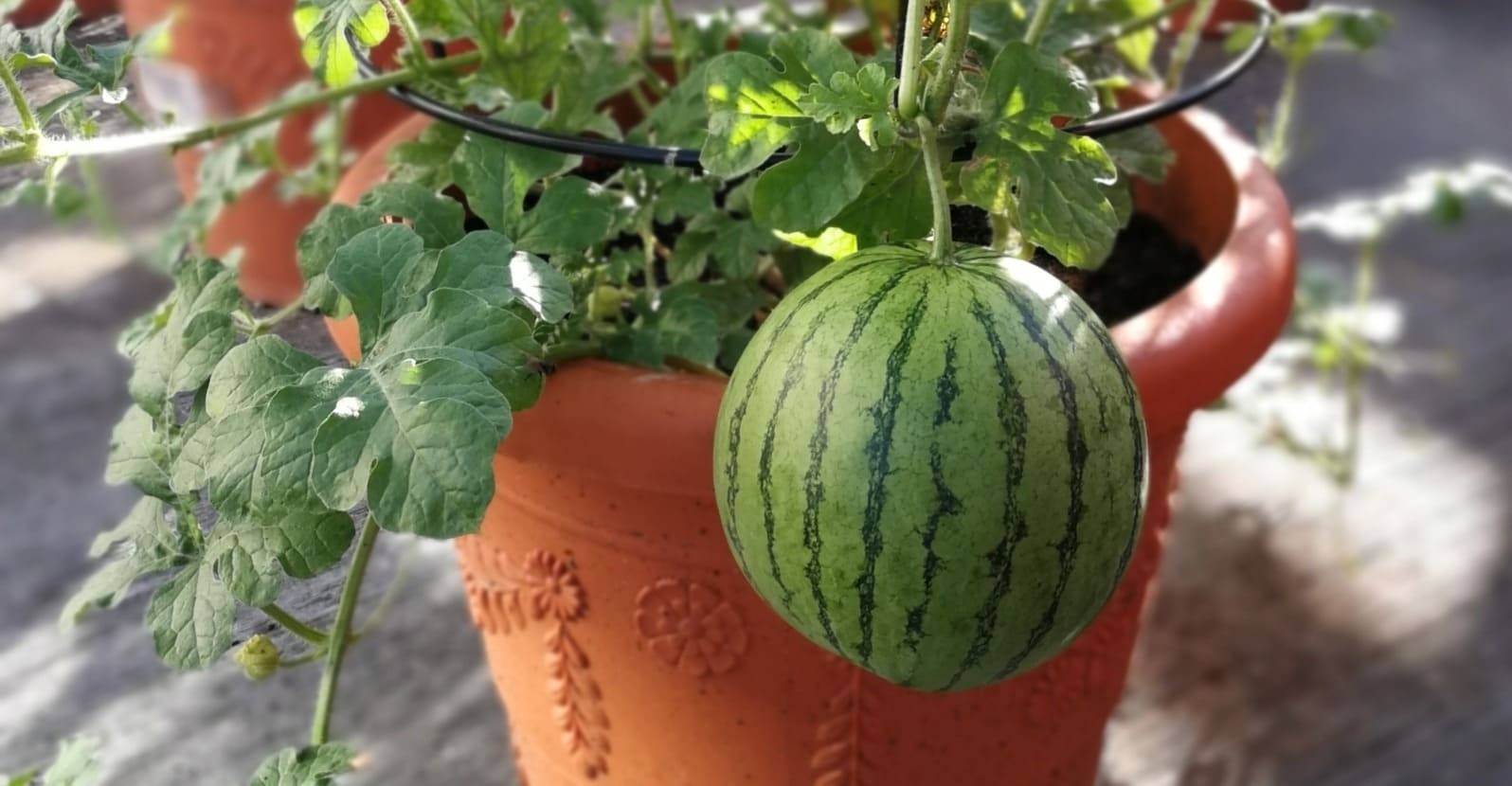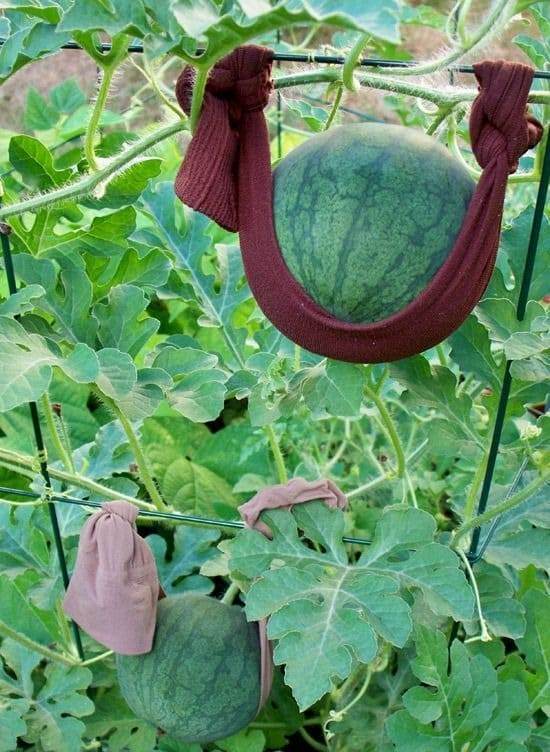Gardening in small spaces or on patios doesn’t mean you have to give up the dream of growing delicious fruits like watermelons. With a bit of know-how and a lot of love, you can savor the sweet taste of homegrown watermelons, even in limited space.
Container gardening is the solution, and it’s not as complicated as it sounds. In this guide, we’ll walk you through the steps, from preparation to harvest, so you can enjoy this summer favorite from the comfort of your own patio.
How To Grow Watermelon In Containers
1. Prepare Soil And Containers
Let’s get started by selecting a suitable container. It would be best if you opt for a large one, like a half wine barrel or a deep, 5-gallon bucket and make sure it has drainage holes to prevent waterlogging.
Fill your container with a high-quality potting mix, ensuring it’s rich in organic matter and well-draining. Watermelons need space for their roots, so bigger is better. To create an ideal environment, you can mix in compost or well-rotted manure.
2. Selecting Watermelon Varieties
Choosing the right watermelon variety is crucial for container gardening success. Compact or “bush” varieties are your best bet. Look for types like “Sugar Baby” or “Bush Sugar Baby”, which are well-suited for small spaces. These varieties produce small to medium-sized fruits with all the sweet, juicy flavor you crave, but in a more manageable package for container growing.

3. Planting Watermelon Seeds Or Transplants
For a head start, you should consider using transplants. However, if you’re up for the challenge, you can start watermelon seeds indoors and transplant them to your container when the weather warms up. Plant the seeds or transplants according to the package instructions, usually about 1 inch deep. If starting from seeds, thin to the strongest seedling after germination.
Taking Care Of Your Watermelon
1. Water properly
It’s crucial to provide watermelon with sufficient water, ensuring that the soil remains evenly moist without becoming excessively wet. Adequate drainage is essential for the water to flow freely from the bottom.
When cultivating watermelon in containers exposed to full sunlight, it’s necessary to water the plant daily, and perhaps even twice on particularly warm summer days. As the fruits begin to swell and mature, it’s advisable to decrease the frequency of watering. During this stage, you should water carefully and avoid overwatering or underwatering to achieve the most delicious melons.

2. Fertilizing
After you watch the plants start to flower and appear to bear fruits, fertilize them with a balanced, slow-release fertilizer. Avoid high-nitrogen fertilizers, as they can result in excessive foliage growth at the expense of fruit production.
3. Pruning
Pruning is crucial to container-grown watermelons. You should limit the number of vines to one or two per plant to ensure the best fruit quality and pinch off any side shoots that appear.

4. Pollination
Watermelons require pollination to set fruit. While bees often do the job outdoors, for container-grown plants, you might need to give it one hand. Gently brush the male flower’s stamen (the center part) against the female flower’s pistil (the knob in the center). Alternatively, use a small paintbrush to transfer pollen between flowers.
5. Pest And Disease Management
Watermelons can be affected by diseases if they are exposed to excessively hot and humid or cold weather, or if they are grown in soil that is waterlogged. It is important to watch out for common garden pests like aphids, cucumber beetles, and those that affect squashes and cucumbers can also infect watermelons.

To remove them, neem oil and insecticidal soap can work well. Good air circulation and proper spacing can prevent diseases. Mildew-resistant varieties are also available.
Harvesting And Storage
1. Harvesting
The time for harvesting is determined by various factors such as the climate, season, and the specific variety of crops. Generally, it begins approximately 80-90 days after the seeds are sown and falls within a range of 30 to 60 days after the flowering stage.

To see if watermelons are ready to be harvested, you should check whether the fruits sound hollow when tapped and the tendril closest to the stem has turned brown. When harvesting, cut the fruit from the stem with a sharp knife or shears, leaving a small stem attached.
2. Storage
Watermelons are best enjoyed fresh, but if you have more than you can eat in one sitting, store them in the refrigerator for up to two weeks.
Helpful Watermelon Growing Tips
1. Sunlight
Ensure your container receives at least 8 hours of sunlight daily, and rotate it to prevent one side from getting too much shade.

2. Stressing Factors
When the fruits are maturing, if the plants are subjected to stress factors such as temperature fluctuations, pests and diseases, excessive watering, or insufficient watering, it can result in fruits that are not as flavorful and sweet.
3. Providing Support
Growing melons vertically on a trellis in small spaces is a great method to maximize space. You can create a hammock using netting, a bag, or a stretchable cloth to provide support for the fruit.

Growing watermelons in containers is not only enjoyable but also an excellent way to make use of every inch of your patio and relish the sweet rewards of your homegrown watermelons. Following our steps, and you’re on the way to have a bountiful watermelon harvest.
